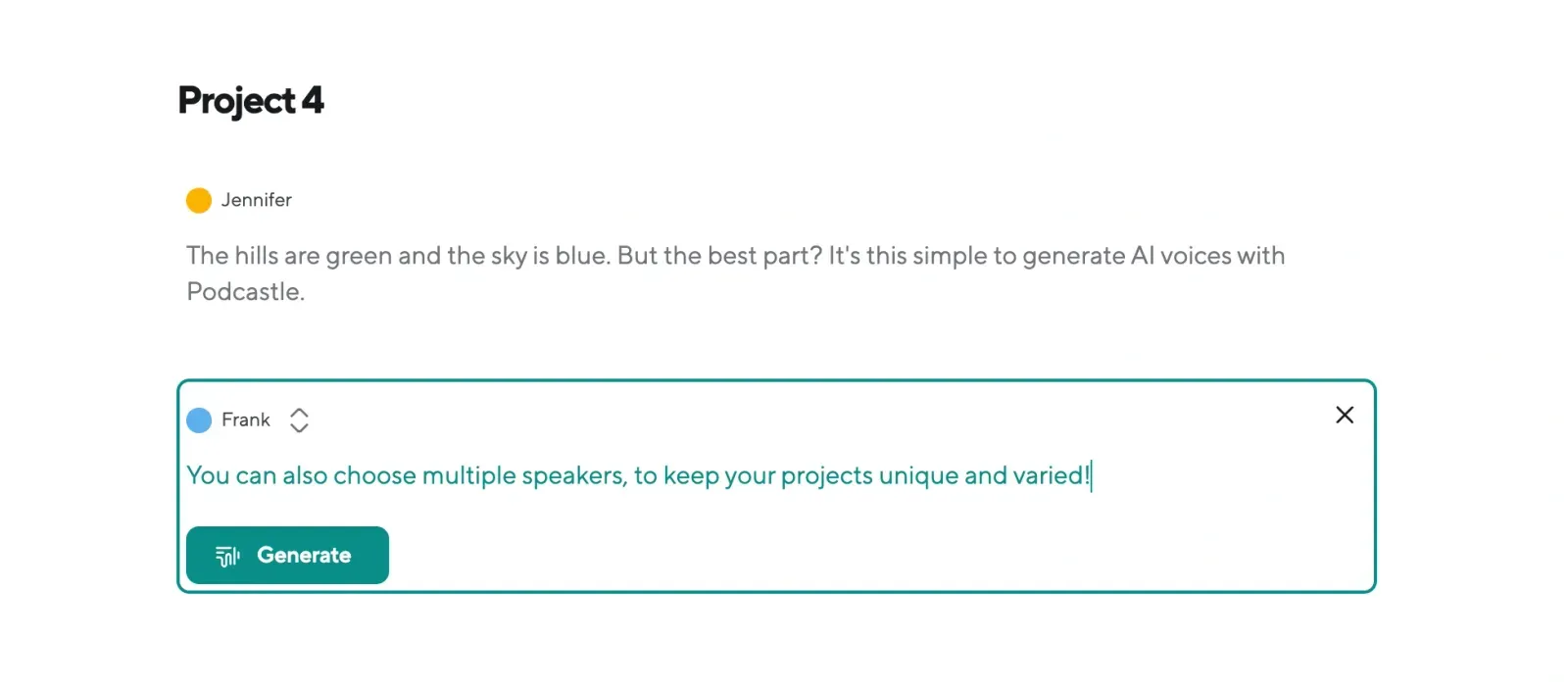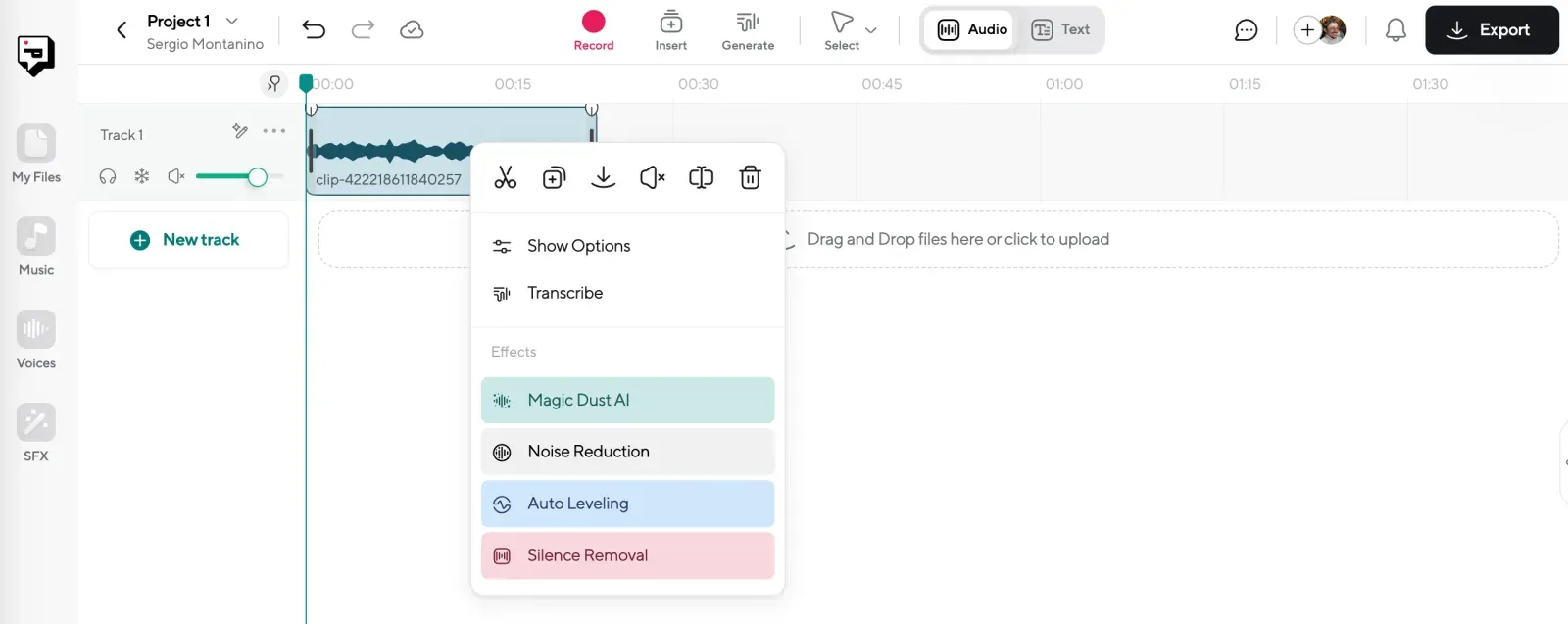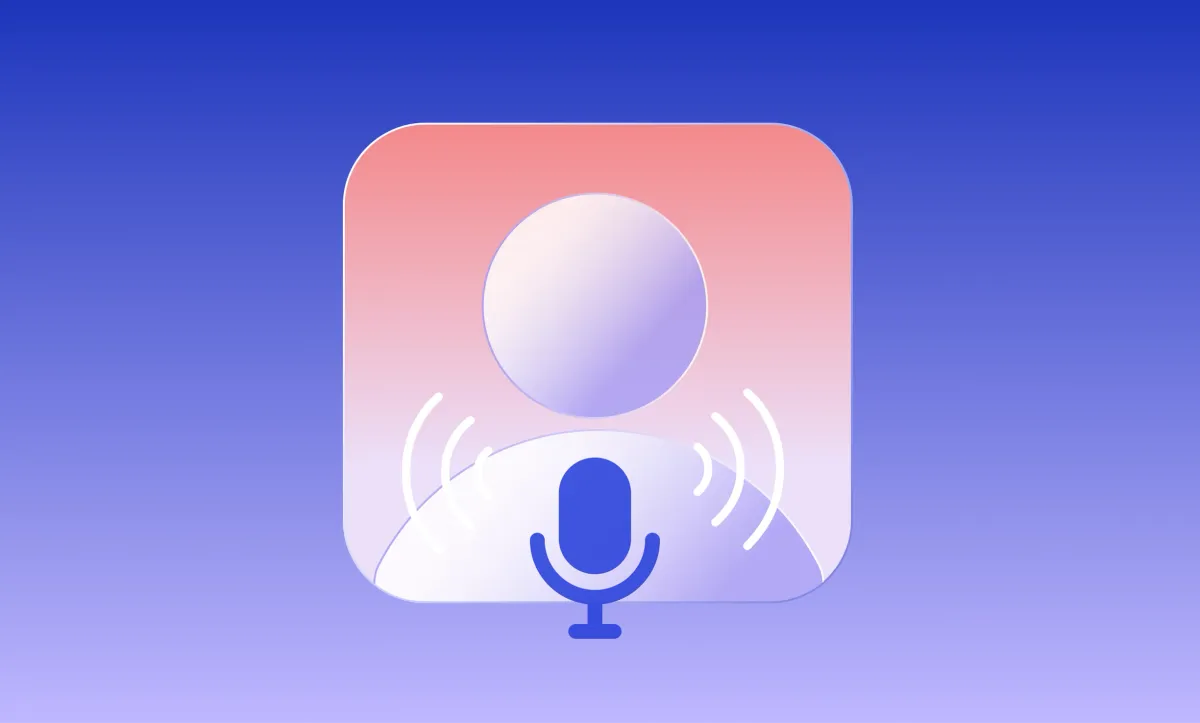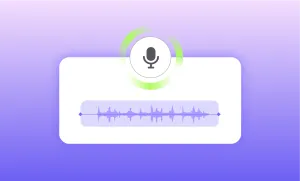We’ve all had that one professor whose lectures were stronger than a sleeping pill. The thing is that most of the time the low-pitched, monotonous narration style is a recipe for instant disengagement.
Trust us, there’s a reason why the voiceover actor job exists and it’s not just because some people have prettier voices: the reason these people get payed is because they’ve mastered the different narration styles. And if that’s what you want to learn, we’re here to help you out.
All Narration Styles (and How to Master Them)
Narration isn’t just about reading words off a script—it’s about delivering them in a way that enhances the message. Below, we break down some of the most common narration styles, what they’re best suited for, and how you can master them.
1. Conversational Narration: Sounding Natural and Engaging
The conversational narration style is one of the most popular today. Why? Because audiences love content that feels like a real, human interaction rather than a stiff, robotic lecture. This style mimics everyday speech, making listeners feel like they’re having a friendly chat rather than being lectured to.
Best for: Podcasts, YouTube videos, social media content, explainer videos.
How to Master It:
- Use contractions and casual language. Instead of saying, “You will learn a lot from this video,” say, “You’ll learn a lot from this video.”
- Vary your tone and pacing. A natural conversation isn’t flat—it has energy shifts, pauses, and fluctuations in tone.
- Practice active listening and mimic real speech patterns. Listen to podcasts or YouTubers with a strong conversational style and take note of how they emphasize certain words or use natural pauses.
- Imagine speaking to one person. Instead of addressing an entire audience, visualize talking to a friend, which makes your tone more intimate and natural.
2. Formal Narration: Professional and Polished Delivery
When delivering corporate or educational material, a formal narration style is ideal. This type of narration is polished, articulate, and free of slang or overly casual language. The goal is clarity, authority, and professionalism without sounding robotic.
Best for: Corporate presentations, e-learning courses, documentaries, business content.
How to Master It:
- Articulate every word clearly. Enunciate properly and avoid mumbling to maintain professionalism.
- Keep a steady pace. Rushing through content makes it difficult to follow, while speaking too slowly can lose engagement. Aim for a balanced rhythm.
- Use proper intonation without over-exaggerating. While you don’t want to sound monotone, avoid unnecessary dramatization—think “news anchor” level of enthusiasm.
- Practice reading technical or business-related content aloud. This helps you get comfortable with formal language while keeping it engaging.
3. Authoritative Narration: Commanding Attention with Confidence
An authoritative narration style is all about confidence. This style is powerful, direct, and conveys a strong sense of expertise. It’s commonly used in news broadcasts, documentaries, and leadership videos where credibility is essential.
Best for: News reports, leadership content, instructional videos, motivational speeches
How to Master It:
- Adopt a strong, steady tone. Your voice should sound assured and unwavering, not hesitant or uncertain.
- Emphasize key points. A great authoritative narrator knows how to highlight important words and phrases without overdoing it.
- Use controlled pauses. Strategic pauses after important statements give listeners time to absorb the message.
- Lower your pitch slightly. Studies suggest that deeper voices are often perceived as more authoritative and trustworthy.
4. Energetic Narration: Keeping the Audience Excited
Energetic narration is lively, engaging, and full of enthusiasm. This style keeps listeners hooked, making it perfect for promotional content, product advertisements, and animated videos.
Best for: Commercials, children’s content, sports commentary, entertainment videos
How to Master It:
- Amp up your energy without sounding forced. There’s a fine line between being enthusiastic and sounding overly exaggerated. Aim for a natural, uplifting tone.
- Vary your pitch and volume. A monotone delivery won’t cut it. Let your voice rise and fall to add excitement.
- Match the energy of the content. A high-energy ad needs a super enthusiastic tone, while a fun travel vlog may need a more relaxed but still upbeat vibe.
- Smile while you speak. This might sound weird, but smiling while talking naturally makes your voice sound more cheerful and inviting.
5. Emotional Narration: Storytelling with Heart
Emotional narration focuses on evoking feelings—whether that’s empathy, excitement, sadness, or hope. This style is especially effective for storytelling and cause-driven content.
Best for: Audiobooks, charity campaigns, personal storytelling, documentary narrations
How to Master It:
- Tap into the emotions of the script. Before reading, ask yourself: What is the underlying emotion in this passage? Then, reflect that in your tone.
- Use natural pacing. Slowing down slightly during emotional moments can add depth and authenticity to your narration.
- Experiment with vocal inflections. A slight quiver in your voice can convey sadness, while an excited lift in pitch can express joy.
- Avoid sounding overdramatic. Keep it natural—forced emotions can feel insincere and take the listener out of the moment.
Understanding Narrative Styles in Scriptwriting
Beyond how something is said, the way a story is structured also plays a huge role in narration. Let’s explore some of the most common narrative styles:
First-Person Narration
First-person storytelling uses "I" and "we," putting the audience directly inside the narrator’s perspective.
Best for: Personal vlogs, audiobooks, memoirs.
Example: “I remember the first time I stepped onto the stage. My heart pounded as I took a deep breath.”
Second-Person Narration
Second-person narration directly addresses the listener using "you," making them the protagonist.
Best for: Interactive content, marketing campaigns, self-help guides.
Example: “You walk into a room filled with opportunities. What’s your next move?”
Third-Person Narration
Third-person narration describes events from an outside perspective using "he," "she," or "they."
Best for: Documentaries, audiobooks, historical storytelling.
Example: “She stood at the edge of the cliff, staring at the endless sea below.”
Omniscient Narration
This style gives the narrator an all-knowing perspective, revealing multiple characters' thoughts and feelings.
Best for: Novels, complex storytelling, historical narrations.
Linear vs. Non-Linear Narratives
- Linear storytelling follows a clear beginning-to-end structure (great for traditional storytelling and education).
- Non-linear storytelling jumps between timelines or perspectives (perfect for mysteries, thrillers, and experimental content).
The Science Behind Narration and Audience Perception
The way a story is told can shape how we feel, what we remember, and even influence our decisions. Research published in Annals of Behavioral Medicine highlights how narratives can be more persuasive and memorable than just stating facts. Stories connect with people on an emotional level, making complex information easier to understand and more likely to stick.
One reason stories are so effective is that they create emotional engagement. When we hear a story, we often relate to the characters and their experiences, which makes the message feel more personal. This is especially useful in areas like health communication, where stories about real people making positive changes can inspire others to do the same.
Another key factor is behavioral modeling—when we see someone in a story successfully doing something, we’re more likely to believe we can do it too. This is why storytelling works so well in marketing, education, and even self-improvement content. Instead of just telling people what to do, a well-crafted narrative shows them through relatable examples.
Key Takeaways:
- Stories create stronger emotional connections, making information more memorable.
- People are more likely to take action when they see characters modeling positive behaviors.
- Narratives can make complex topics feel personal and relatable, increasing audience engagement.
So, whether you’re using a formal, conversational, or emotional narration style, the key is to tell a story that resonates with your audience. The right narration style can turn ordinary content into something powerful and persuasive.
How to Create AI Voices with Podcastle
Creating the perfect AI voice isn’t just about picking a robotic narrator and hitting play—it’s about crafting a voice that fits your content’s tone, style, and personality. With Podcastle’s AI voice tools, you can experiment with different narration styles, fine-tune delivery, and bring your script to life. Here’s how to do it step by step.
Step 1: Start a New AI Voice Project

First, log into Podcastle and navigate to the AI Voices section. Click Create a Project to begin. This is where you’ll add your script, choose a voice, and start shaping your narration. Whether you’re making a podcast, audiobook, or marketing video, this is your starting point for customizing the voiceover narration.
Step 2: Choose the Right AI Voice

The voice you select determines how your audience perceives the message. A deep, steady voice sounds authoritative, while a lighter, faster-paced voice feels conversational and engaging.
Podcastle offers a variety of AI voices, each with different tones, accents, and delivery styles. You can:
– Browse voices based on style (e.g., formal, energetic, storytelling)
– Test different voices before finalizing your choice
– Select multiple voices for projects requiring different speakers
Once you’ve found the perfect match, paste or type your script into the editor.
Step 3: Generate and Refine Your AI Voiceover

Click Generate, and Podcastle’s AI will convert your text into speech. While the first version may sound good, a few tweaks can make it even better:
- Adjust pacing – Add pauses for dramatic effect or speed up delivery for excitement.
- Emphasize key words – Stressing certain words can change how a message is received.
- Break long sentences – Shorter sentences make narration sound more natural and human-like.
Step 4: Polish Your Voiceover with Audio Tools

Podcastle includes built-in editing tools to enhance the quality of your AI voiceover:
- Magic Dust AI improves clarity and smoothness.
- AI Audio Assistant streamlines audio editing by automatically enhancing sound quality, reducing noise, and providing intelligent editing suggestions.
- Audio Effects like reverb or EQ can adjust how the voice sounds in different settings.
Once your AI voice sounds exactly how you want it, export your final voiceover and integrate it into your content. With Podcastle, you can experiment with different narration styles and AI voices until you find the perfect fit.
Tips for Choosing the Right Narration Style
Picking the right narration style can make or break your content. The way a story is told affects how your audience feels, understands, and connects with your message. Whether you're using a human voiceover or experimenting with AI voices, your narration style should match the mood, purpose, and audience of your content. Here are some key tips to help you choose wisely:
- Know Your Audience – Are you speaking to professionals, casual listeners, or kids? A formal voiceover narration works for corporate content, while a relaxed, friendly tone fits lifestyle or entertainment videos.
- Match the Tone to the Content – The right narration style depends on the message. A documentary might need a steady, authoritative voice, while a podcast could benefit from a conversational, engaging tone.
- Experiment with AI Voiceover Tools – With platforms like Podcastle, you can test different AI voices before deciding. Play around with pacing, pitch, and emphasis to see what fits best.
- Keep It Natural – No matter the narrative style, avoid robotic delivery. Even if you're using an AI voiceover, tweak the rhythm, pauses, and inflections to make it sound human and engaging.
- Test and Get Feedback – Before finalizing your voiceover narration, listen back and get opinions from others. Sometimes, a small tweak in delivery can completely change the feel of the content.
The right narration style makes your content more engaging, persuasive, and memorable. Experiment, refine, and find the perfect voice for your story!








